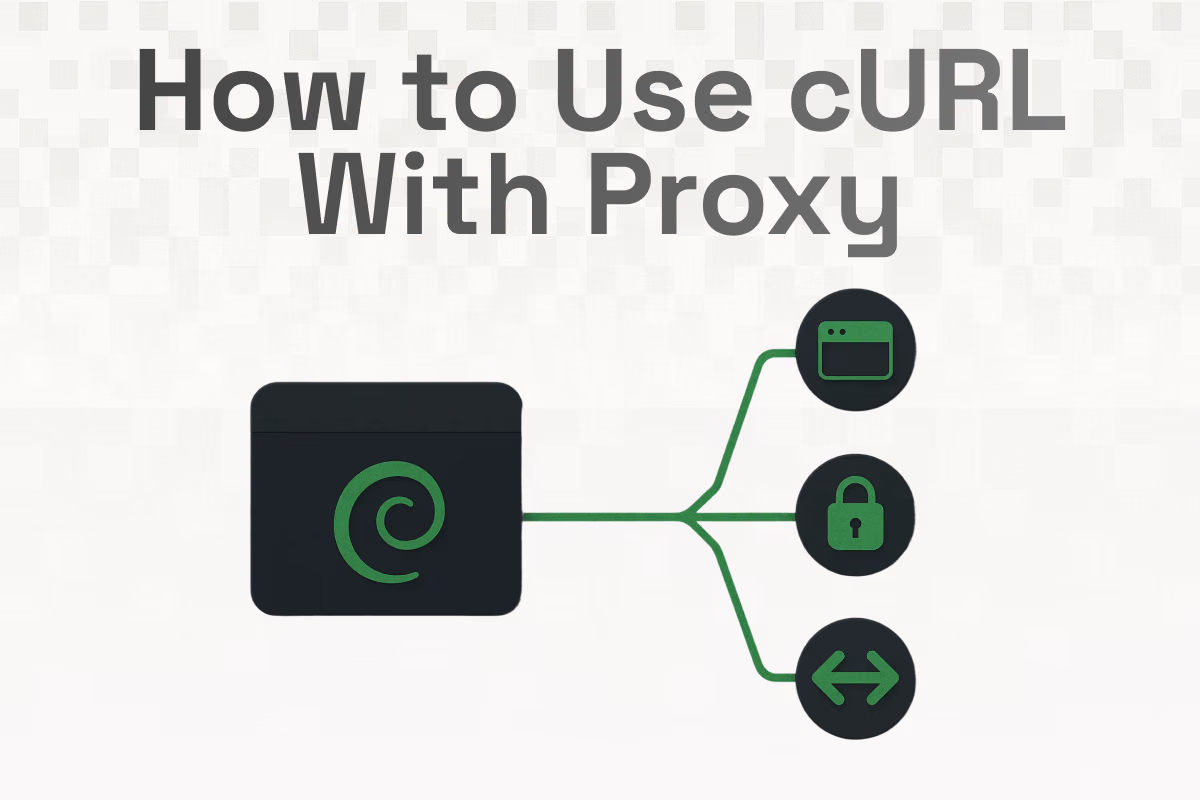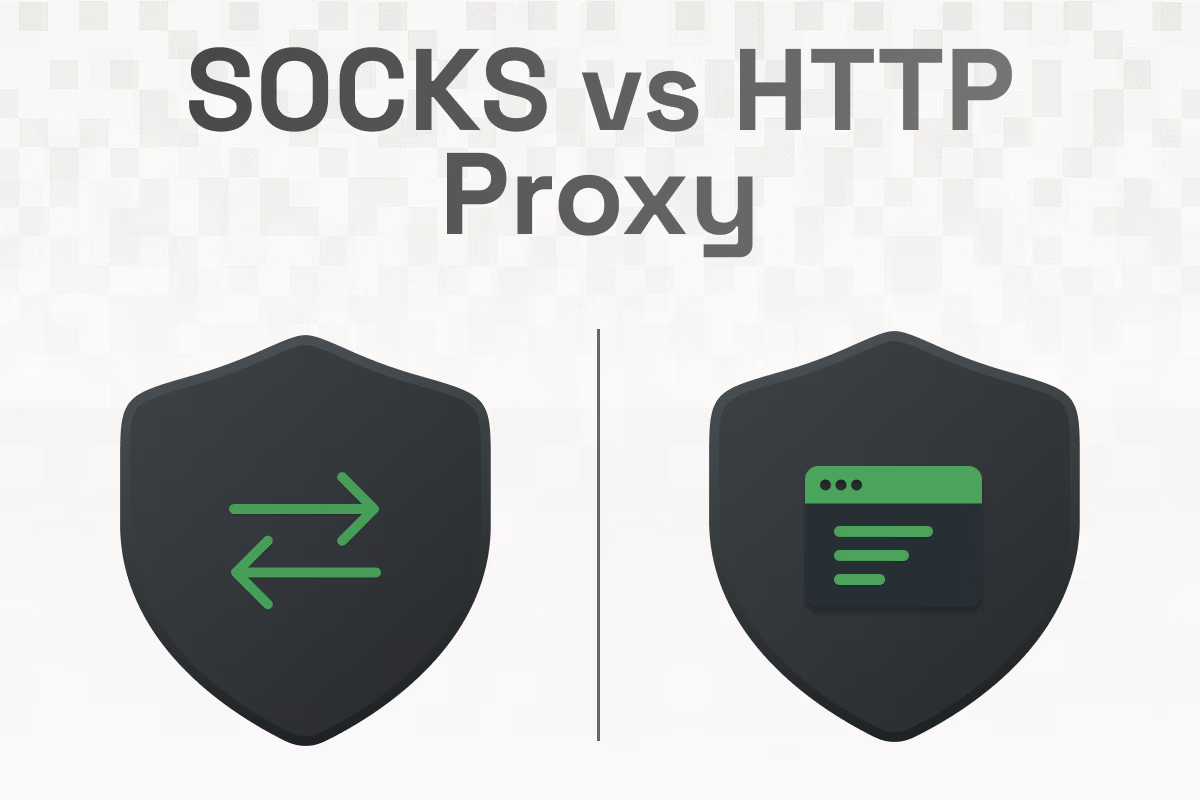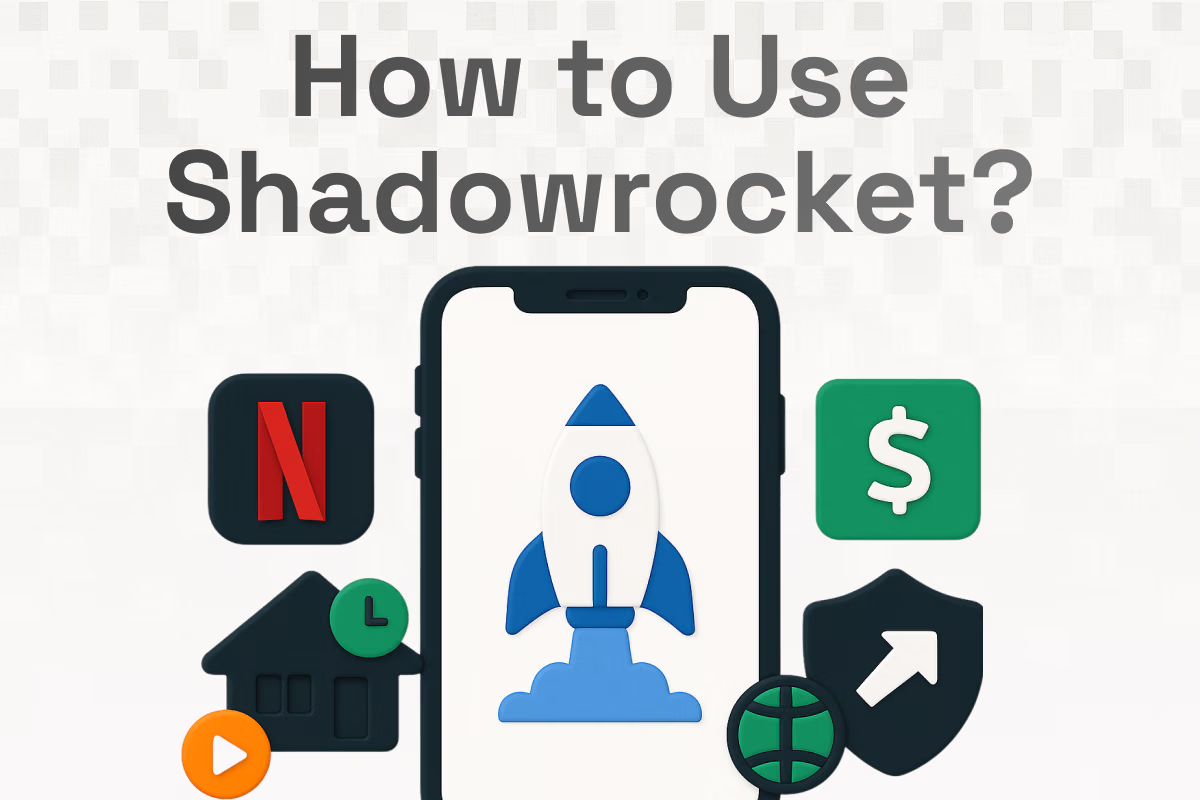Table of Contents
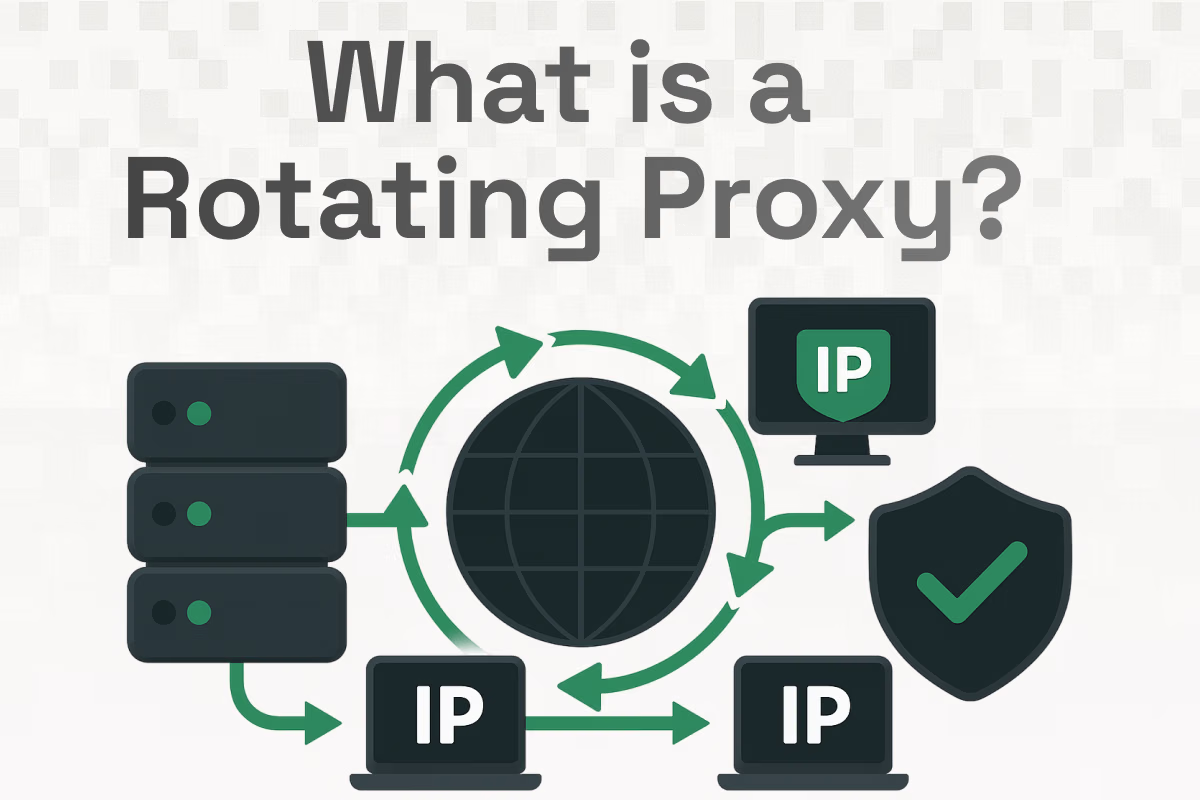
In the world of web automation, data scraping, ad verification, SEO, social media automation, and similar tasks, proxies are essential tools. As anti-bot, anti-scraping, and IP-rate limit defenses become more sophisticated, static or fixed proxies are often inadequate. This is where rotating proxies come in. They provide both scale and enhanced anonymity by regularly changing your IP address.
In this guide you will learn what rotating proxies are, how they differ from static proxies, what types exist, when to use them, best practices, and an in-depth look at Floxy, a provider definitely worth considering for rotating residential and datacenter proxies.
What Is a Rotating Proxy?
A rotating proxy is a proxy server or proxy gateway configuration in which the IP address used to send outbound HTTP/S or other protocol requests rotates automatically according to some rule.
Here are the main features:
- Every request, or every session, or every time interval uses a different IP address (or at least may use a different IP).
- The pool of IPs is maintained by the proxy provider.
- The user (you or your script) does not have to switch proxies manually for each request; the provider handles rotation.
Contrast with standard or static proxies
Static (or dedicated) proxies are those in which you get a fixed IP (or small fixed set) for the duration of a session or contract. All your traffic flows through the same IP, unless you manually change proxies.
Rotating proxies, by contrast, regularly change the IP, either per request, per session, or after a set time. This reduces the risk of detection, IP bans, rate limiting, and blocking by anti-bot systems.
Automatic new IP assignment
Depending on the provider, a rotating proxy might:
- Assign a new IP per request.
- Maintain “sticky” sessions (same IP for a session of requests) but rotate after the session ends.
- Rotate after a fixed time window (say every 1 minute, 5 minutes, 30 minutes, etc.).
How Does Proxy Rotation Work?
Proxy rotation involves a few components: a pool of IPs, a gateway or backconnect proxy, logic for when to rotate, and session management.
IP Rotation Explained
There are several rotation strategies:
- Per-request rotation: every single request is forwarded through a different IP from the pool. Highest anonymity but more overhead.
- Per-session rotation: a session (set of related requests, perhaps defined by cookie, authentication, or user-flow) uses one IP; after the session ends or is closed, a new IP is assigned.
- Time-based rotation: even if you keep the same session, after a fixed time interval the proxy changes your IP.
The rotation logic can be based on number of requests, elapsed time, failure of current IP (if blocked or slow), or explicit commands from the client (e.g. via a session-ID or API).
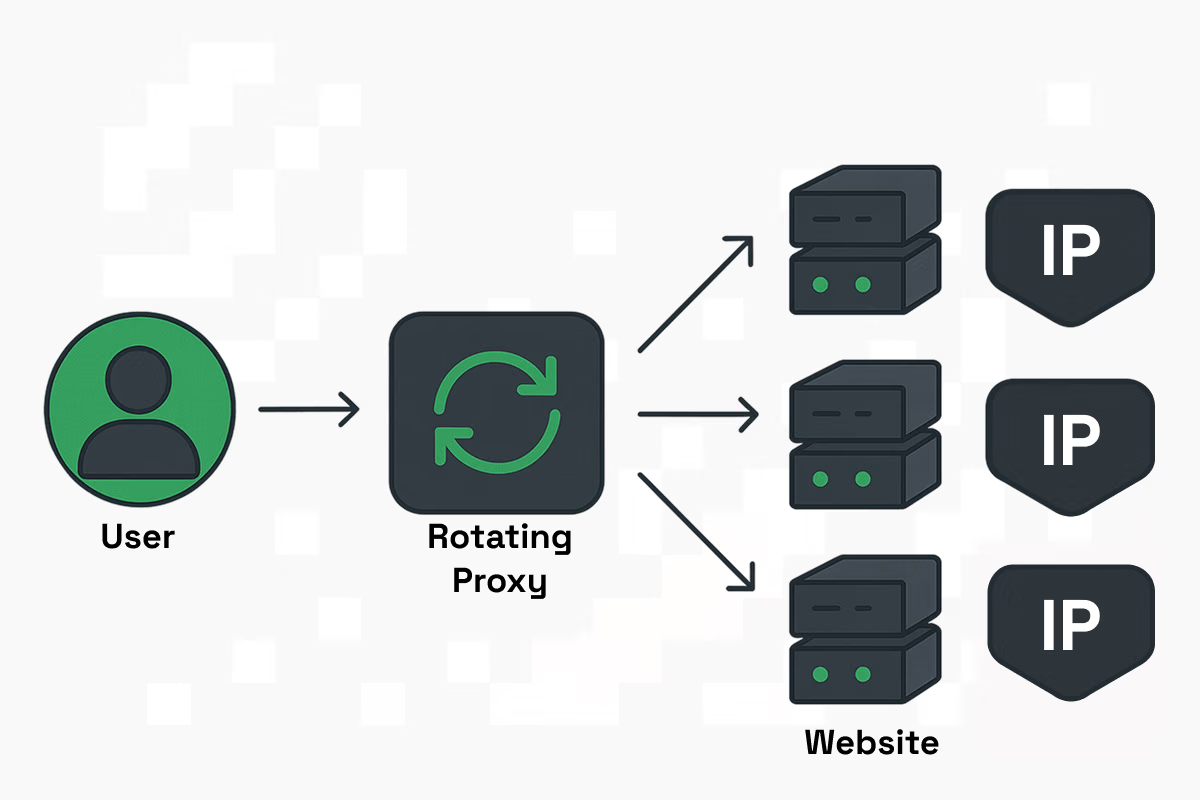
Proxy Rotation Methods
Some of the methods providers use:
- Rotating proxy pools / backconnect gateways: you connect to a single gateway endpoint (hostname + port + credentials), and this gateway picks an IP from its large pool for your request or session. If it gets blocked, it can switch to another automatically.
- Sticky IP / session-persistence options: some providers allow you to keep the same IP for short durations (session stickiness) although under the hood that IP also rotates later. This is useful when you need some continuity (logins, multi-step flows).
- Geo-targeted pools: providers segment their IPs by country, city, ASN/ISP, etc., so you can request IPs from a specific region even while rotating.
- Load balancing and health checks: rotating proxies often monitor IP health (latency, block rate) and retire problematic ones, so your rotation avoids “bad” IPs.
Rotating Proxies vs. Static Proxies
To choose wisely, you need to understand when static or rotating proxies are better.
What Are Static Proxies?
Static proxies give you one (or fixed small set of) IP address(es) over the whole session or contract period. The same IP is used until you disconnect or manually change. These might be residential static, datacenter static, or mobile static depending on the provider.
Advantages of static proxies:
- Consistency (login sessions, shopping carts, multi-step workflows).
- Easier to whitelist on some websites.
- Sometimes faster or more stable (since fewer IP changes, fewer DNS / routing changes).
Disadvantages:
- If that IP is flagged or banned, your whole workflow fails.
- Higher risk of detection if making many requests from the same IP.
Static vs. Rotating Proxy – Which to Choose?
Here are trade-offs and use-case comparisons:
So if your work involves lots of independent requests (e.g. scraping product listings, collecting SERP data, verifying ads across geographies), rotating proxies are a better fit. If you must log in, maintain session state, or do something where changing IP mid-workflow destroys your state, a static or sticky proxy is better.
Types of Rotating Proxies
Here are the main flavors of rotating proxies, with pros and cons.
Rotating Residential Proxies
These are rotating proxies that use IP addresses assigned by ISPs to residential users. They appear more like everyday users to target servers.
Benefits:
- Harder to detect/block, since they originate from real ISPs.
- Better success rate against anti-bot systems.
- More legitimate-looking, especially for websites that check for datacenter IP ranges or known proxy ranges.
Drawbacks:
- More expensive.
- Variable latency / reliability (residential networks are less uniform).
- Potential ethical or legal issues if IPs are not sourced properly.
Rotating Datacenter Proxies
These proxies rotate among IPs hosted in data centers.
Benefits:
- Usually cheaper.
- Faster, often more predictable latency.
- Easier to scale for high throughput.
Drawbacks:
- Easier to identify and block (many anti-bot systems flag datacenter IPs).
- Less “trusted” by sensitive systems.
- Shared usage may increase risk of having IPs flagged.
Residential Backconnect Proxy
A backconnect proxy is a gateway that handles proxy rotation: you send all your traffic to one endpoint (or via an API), and behind the scenes it connects to many rotating residential IPs. If the current one is blocked, it picks another.
This method hides all the complexity of rotation from your code.
When Should You Use a Rotating Proxy?
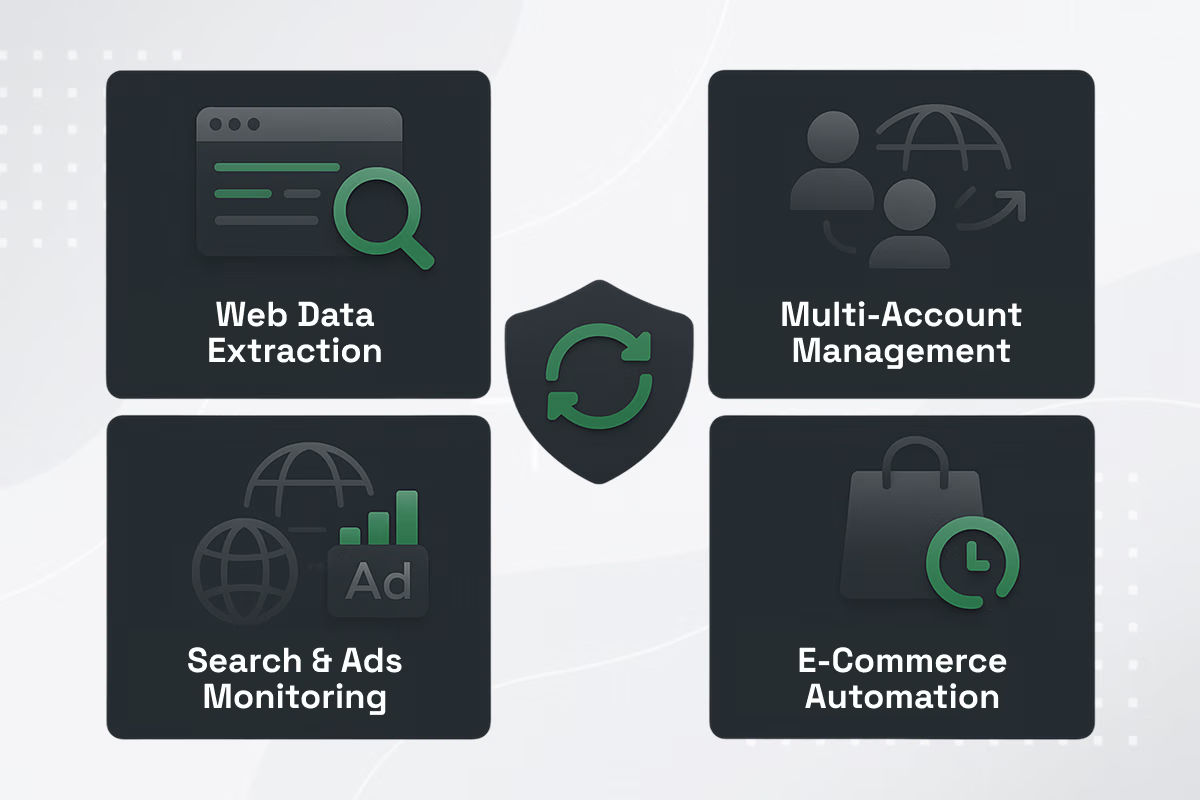
Here are the common scenarios where rotating proxies are very useful.
Web Scraping at Scale
If you need to extract large volumes of data (product listings, price comparison, stock levels) from many pages across one or many websites, rotating proxies help you avoid IP rate limits, CAPTCHAs, or full bans.
Social Media Automation
Managing many accounts or posting/commenting/liking etc. from multiple locations, or monitoring social data. Rotating residential proxies reduce the chance of flagging or account suspensions.
SEO Monitoring & Ad Verification
To check search engine result pages (SERPs) from different geo-locations, or verify ads are displayed properly in different countries, rotating proxies and large IP pools are essential.
Sneaker Bots & Retail Arbitrage
Sites with limited stock often have anti-bot protections. Rotating residential proxies (or specifically mobile/residential with sticky sessions, depending on the workflow) help avoid detection when placing many requests in short time spans.
In all of these use cases the key is: scale + geo diversity + avoiding detection.
Floxy: The Best Rotating Proxy Service to Consider
Floxy is a premium provider of rotating residential and datacenter proxies, built for high performance, reliability, and seamless integration with scraping tools and automation workflows.
Key Features of Floxy
In short, Floxy is among the best options if you want rotating residential + datacenter proxies with good user experience and flexibility.
How to Use a Rotating Proxy in Practice
Putting rotating proxies to work involves setup, coding, and handling practical issues like session cookies, failures, rate limits, etc.
With Browser or OS Settings
If you are manually browsing or testing:
- All major operating systems allow you to specify a proxy (IP + port + credentials). You can change settings manually, but rotating per request manually is tedious.
- You can use browser extensions or system proxy settings to point to a proxy gateway that handles rotation (so from your browser it looks like one proxy endpoint, but behind the scenes it rotates).

With Proxy Managers or Scraping Tools
For automation:
- Python / Requests / HTTP libraries: You supply proxy details, either pointing at the gateway, or maintaining a list of proxy IPs and rotating them yourself.
- Selenium, Puppeteer, Playwright: similar pattern; for each new browser launch or even new page you can rotate proxies. Some libraries or tools allow setting proxy per page or per browser context.
- API integration: providers often offer API endpoints where you can request new session IDs, get new IPs, or set parameters (sticky time, region).
Example in Python
If using sticky sessions, you might include a session ID or special headers/credentials to keep the same IP across several requests.
Risks and Best Practices for Using Rotating Proxies
Rotating proxies help with anonymity and scale but are not magic. You still need to use them responsibly, ethically, and with care.
Avoid bot detection with proper headers and user agents
- Rotate or randomize user-agent strings.
- Set headers like Accept, Accept-Language, Referer, etc., to mimic real browsers.
- Use realistic delays between requests.
Don’t overload single endpoints, respect site terms
- Even with rotating IPs, making many requests per second or minute may trigger rate limits or bans. Pace yourself.
- Read and respect robots.txt for public scraping.
- When scraping data, check that you are not violating terms of service or privacy laws.
Monitor proxy success rate and rotate on failure
- Track how many requests fail due to block/captcha/timeouts etc.
- If an IP is failing often, mark it bad and stop using it.
- Employ retry logic but with new IPs.
Use sticky sessions wisely
- For login flows, multi-step forms, checkout flows, use static or sticky sessions, possibly combining with rotating proxies (e.g. rotate between sessions, but keep an IP stable inside a session).
Ethically source residential IPs
- Make sure providers source IPs legitimately: not using compromised devices or botnets.
- Be aware of privacy implications in the jurisdictions you operate.
Conclusion
Rotating proxies are powerful tools to achieve scale, anonymity, and flexibility in tasks like web scraping, SEO, ad verification, social media automation, sneaker bots, and more. They provide protection against detection, IP bans, and allow geo-diversity, which static proxies cannot.
However, for workflows requiring state, logins, and consistent identity, static or sticky proxies are still useful.
If you are considering a provider, Floxy is a compelling candidate. It offers rotating residential and datacenter proxies, has good performance, aims for developer integration, and positions itself as user-friendly and cost-sensible provider.
Rotating proxies are not a silver bullet, but when used correctly with good practices, they enable robust automation, privacy, and the ability to scale in a modern web where detection is the norm.





